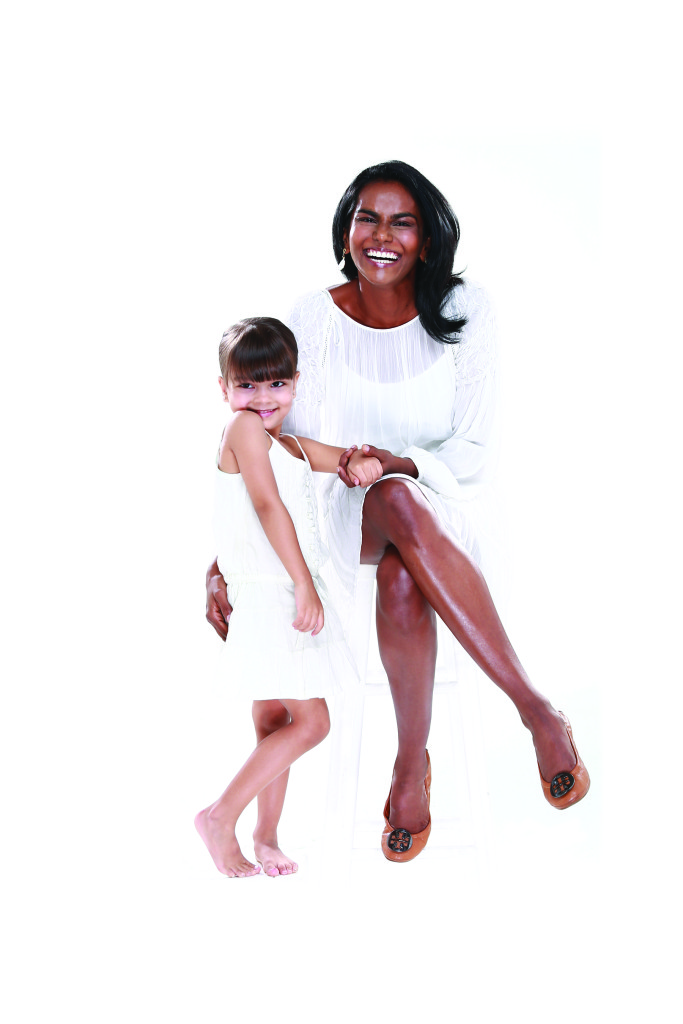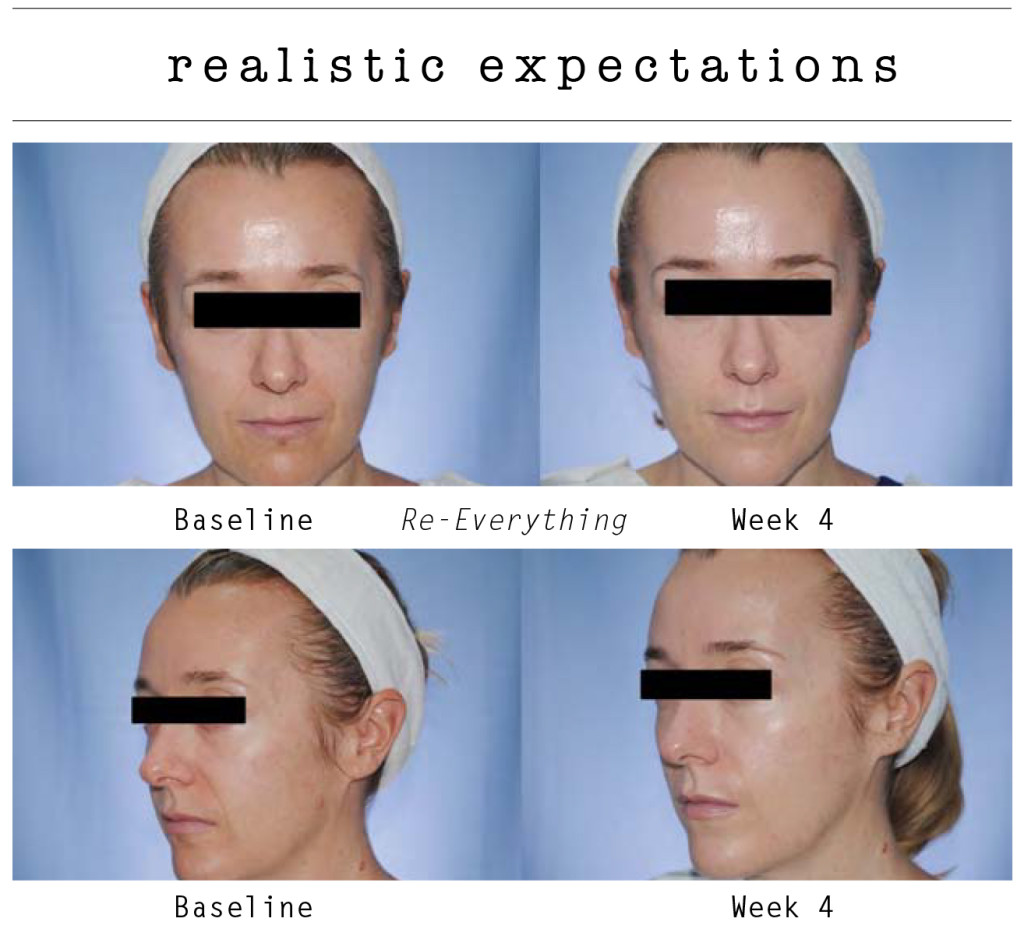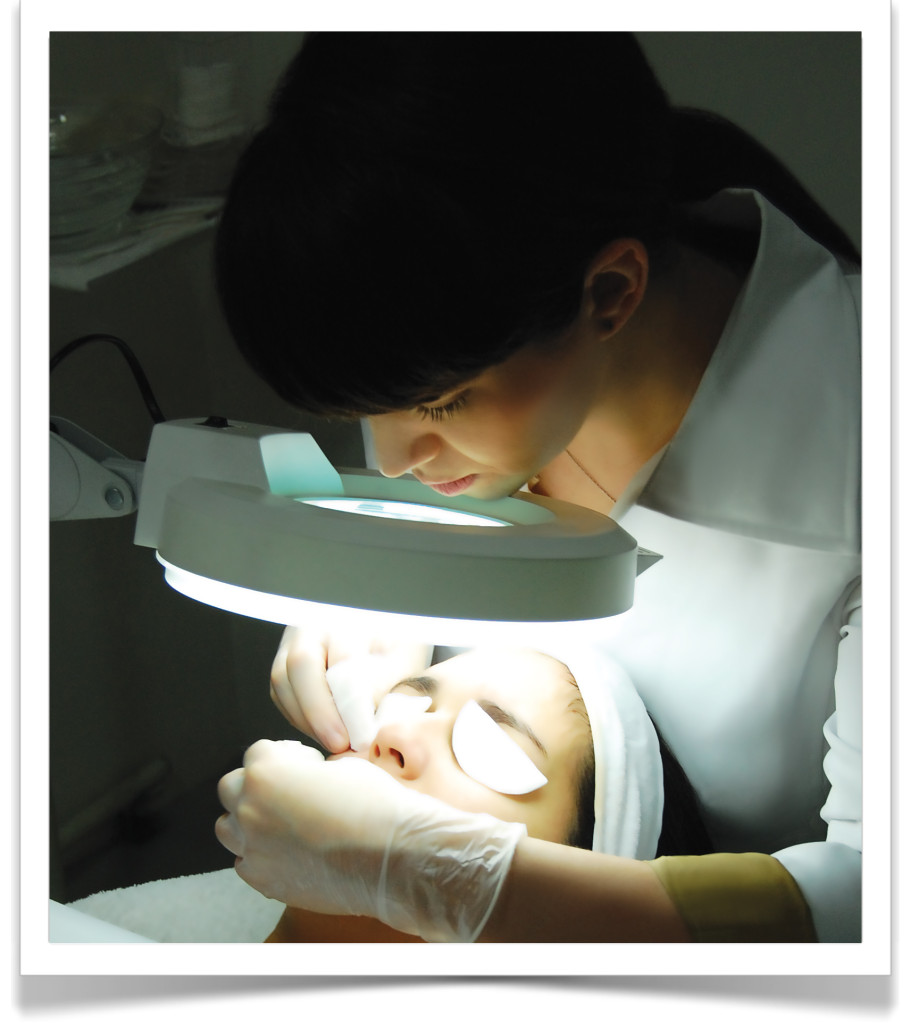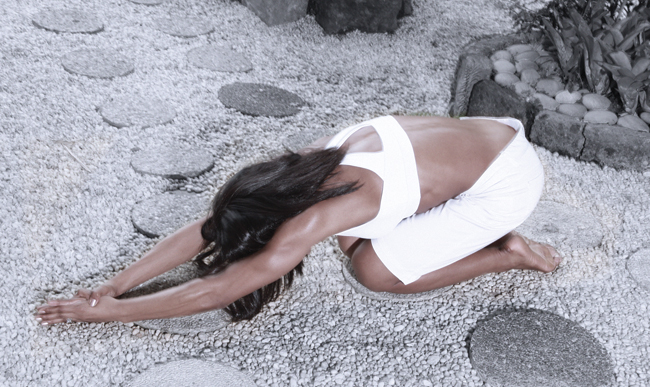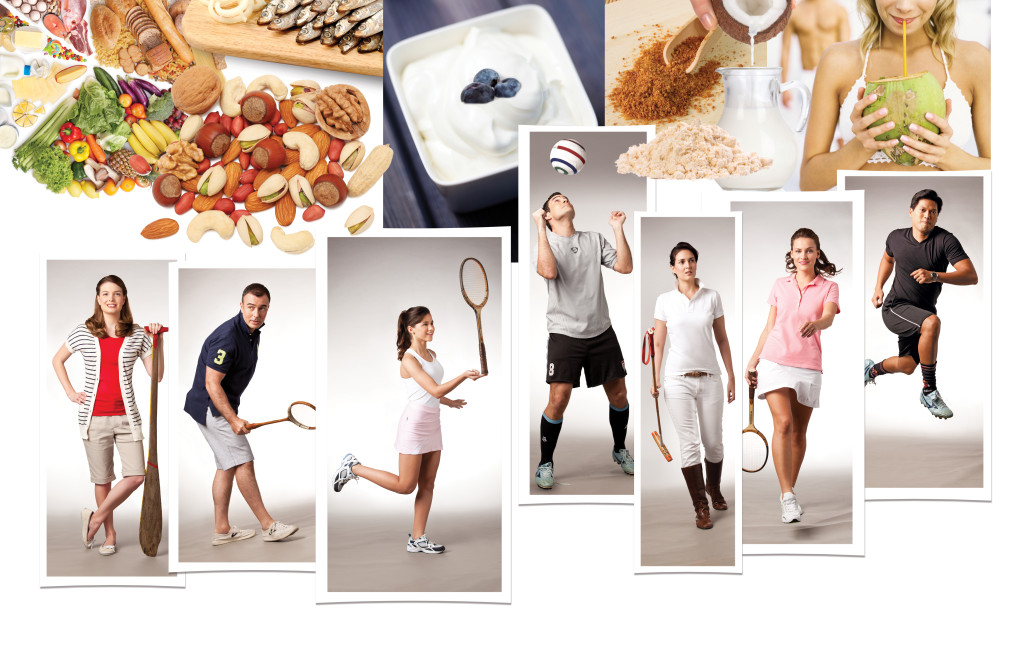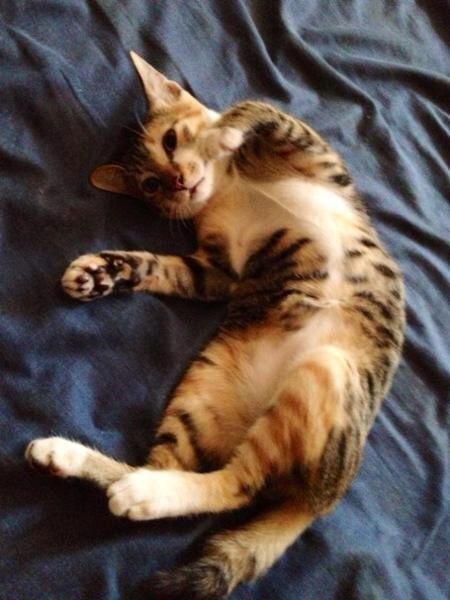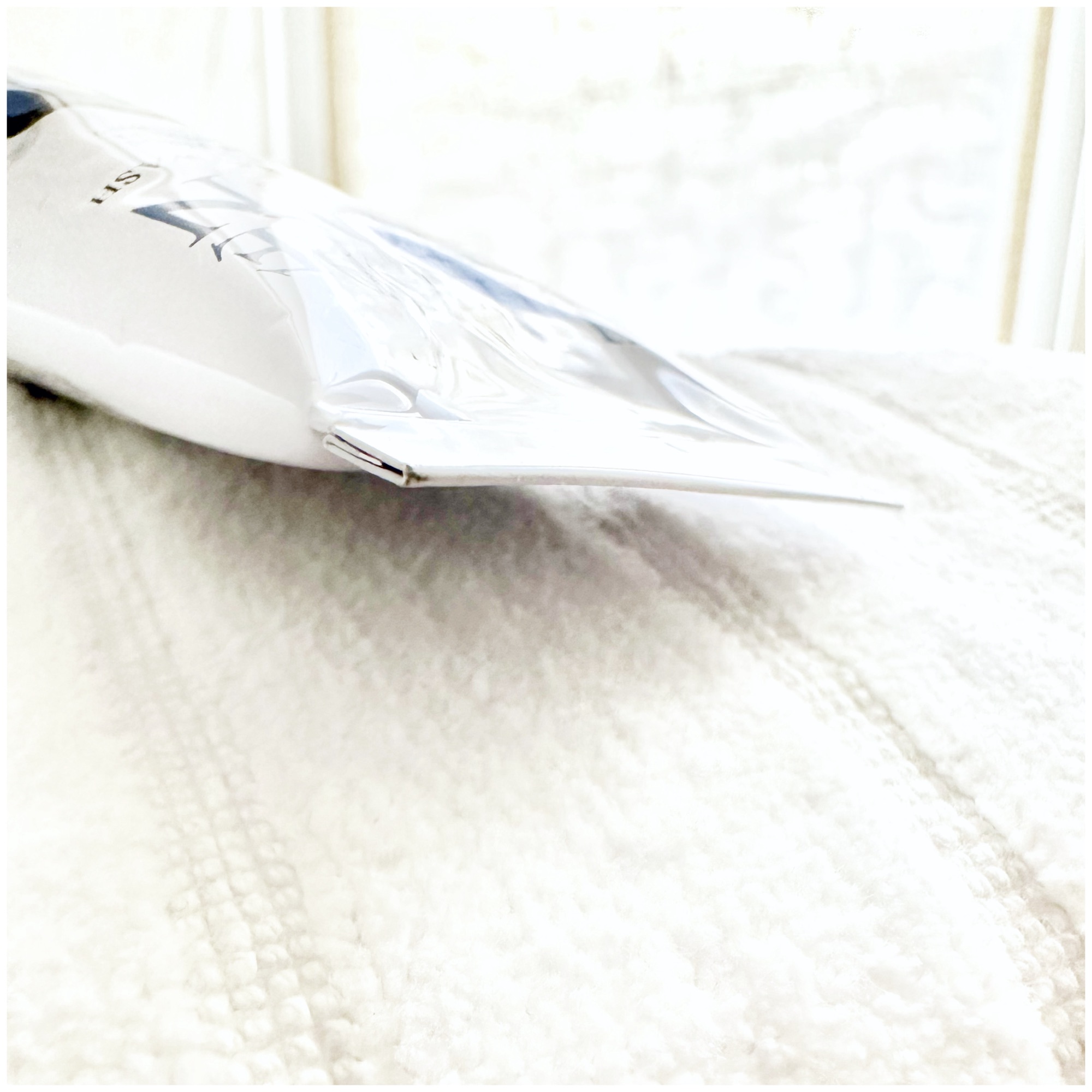We all age. That’s just what living organisms do. But what more and more research is showing is that we can affect how we age — how quickly, how severely, how visibly.
We know, for example, that even if you have diabetes in the family, improved nutrition, careful monitoring and daily exercising may keep you from developing it yourself. More kids are getting acne at younger ages and children as young as age 9 are now given simple acne treatments and regimens, reducing the severity of or even preventing acne altogether, even if both parents had it. Genes are not the all-powerful, written-in-stone determinants that we once thought they were. Stunning new studies in epigenetics are showing how gene modifications might be influenced by our actions, too, and that these changes may even be passed along to future generations.
A study in the journal Nature and Neuroscience [1] shows how a mother rat’s nurturing can imprint her pup’s DNA with biological characteristics that can be passed on to future offspring. The Learn. GeneticsTM Genetic Science Learning Center of the University of Utah breaks it down:
“Mom’s behavior actually programs the pups’ DNA…The epigenetic code allows certain types of information to be passed to offspring without having to go through the slow processes of random mutation and natural selection. At the same time, the epigenetic code is sensitive to changing environmental conditions such as availability of food or threat from predators…So take heart – your epigenetic destiny is not written in permanent ink.” [2]
Another study [3] showed a link between meditation and an increase in telomerase, an enzyme that is fundamental to the long-term health of cells, meaning their youth. While it might have been obvious that participants would feel less stressed after meditation, that this could also affect our bodies — and specifically proteins related to aging — is compelling. The study showed that these positive “emotional” or “psychological” results can impact how telomeres behave, promoting their longevity, and thereby possibly prolonging our cellular health and youth, too. Even if we don’t go down the seemingly sci-fi road of genetic influence, there is an already solid body of research linking inflammation to several skin concerns from acne to eczema, psoriasis and, yes, aging. And what’s linked to inflammation? Stress.
We know that smoking, a poor diet, comedogens, allergens, pollution and unprotected sun exposure can influence skin. We know that proven active ingredients applied topically can improve the skin’s health and appearance. Now we know that stress management is another key to slowing down the aging process.
While we wait for the cream-pill-yoga pose combo that turns us into a 25-year-old version of ourselves overnight, there are right now, right this second, multiple, totally achievable things we can do to keep us looking younger for longer. And they all (spoiler alert) have to do with being good — to yourself and to others. We’ve chosen the top five here:
1) USE SUNSCREEN. DAILY.
ALL YEAR ROUND. EVEN INDOORS.
Photo-aging, skin-damaging, immunosuppressive UVA penetrates windows and windshields.
You’re great about sunscreen use at the beach, slathering it on and reapplying every one to two hours. Fabulous. What you’ve done, however, is the minimum you need to prevent skin cancer, but not necessarily to fight aging. And fighting aging — or at least slowing down the natural aging process — is something that sun protection can definitely do. In interview with CNN, Mayo Clinic professor of dermatology Dr. Lawrence Gibson notes, “photoaging is not part of the natural aging process — it’s avoidable.” [4] A recent study [5] published in the Annals of Internal Medicine proves that daily sunscreen use “protects against photoaging: wrinkling, spotting and loss of elasticity.” [4]
But why all year? Because you’re getting more sun than you think. It’s not just the hard core tanning-baking-hours-outdoors that causes photo-aging and skin cancer, it’s the daily exposure that you don’t even think about. Sun damage is cumulative so even the incidental exposure you get from crossing the street counts. What about winter? You might be getting hit by double exposure from snow glare. And while not much UVB gets to you on cloudy days, a good amount of UVA does — rain or shine, summer or winter, UVA is present and it is very damaging. In addition, UVA passes through window glass and windshields. Think of all the sun you get driving to and from work or sitting next to a window at work or at home when reading a good book.
Finally, photo-aging includes dark spots. While the sun causes them, visible and infrared light from indoor sources such as halogens, fluorescents and even computer screens, saunas and stoves are proven to cause melasma and other dark spots which increases the aged look of skin. To learn more about what else causes hyperpigmentations (surprising things like cooking!), check out Shining The Light On What Causes Dark Spots & Blotches.
2) CHOOSE A PROVEN ACTIVE SKIN REGIMEN. BE CONSISTENT.
The benefits of a daily, active regimen are multiple and cumulative, making skin look younger and more vibrant almost immediately, with dramatic results over time, and keeping skin healthier as we age.
What should I expect from a good anti-aging treatment?
A good at-home regimen isn’t a one-shot deal: it’s meant to keep your skin healthier over time.
As the photographs above show (taken at baseline and week 4 of using Re-Everything Anti-Aging Cream with unbuffered glycolic acid, kinetin, virgin coconut oil and antioxidants in a regimen), at a minimum, you should expect to see brighter, more vibrant-looking skin. Fine lines should appear less pronounced and possibly deeper wrinkles as well. The skin should feel and appear more firm and youthful. With the right actives in the appropriate concentrations, many people report noticing improvements almost immediately. Continued use and proper prevention can deliver more dramatic results in as little as four weeks. And as with exercise and a healthy lifestyle, consistency continues to pay off.
Actives like unbuffered glycolic acid, retinoic acid, and mandelic acid as well as virgin coconut oil and antioxidants like green tea are some of the best studied and most reliable age fighters.
3) REGULAR FACIALS
Deep cleaning + stress management. Win-win.
So here’s the thing: you brush your teeth daily but see your dentist for deeper cleanings. Your daily at-home skin regimen is like brushing your teeth, and facials are your deeper cleaning at the dentist’s. Which your skin needs. The skin on your face is naked — even with sunscreen, it is (like your hands) the part of your body that is unclothed. Your face gets the most direct and regular exposure to the sun’s damaging rays, indoor light and heat, plus pollution and airborne allergens. Therapeutic facials provide a good, deep cleaning through steaming and a proper extraction to purge it of accumulated dirt and debris that topical products cannot wash away. VMV Facials are allergen-free, feature effective active ingredients — which, with the steaming, pore cleansing and gentle massage, are absorbed better — and end with a therapeutic mask, usually with higher concentrations of actives than what you could use at home, and in a formulation that heightens the absorption of actives and provides barrier therapy, intensive hydration, and anti-inflammatory benefits. If your daily regimen is like taking your vitamins, think of this as getting a booster shot of concentrated actives.
If you’d like to up the therapeutic benefits even more, add a chemical peel (high concentrations of powerful actives applied for a short, very controlled amount of time) — ours also feature allergen-free peels we formulate ourselves plus anti-inflammatory products to reduce downtime and the risk of irritation without sacrificing efficacy. A monthly or quarterly laser procedure can be more expensive and may not be doable as regularly as a facial but can be more instantly dramatic.
Still, nothing replaces your daily regimen — again, think of it like brushing your teeth. You wouldn’t stop daily oral hygiene because you see your dentist every few months, would you?
The fantastic icing on this very healthy cake: facials and spa services are healthy, and not just for your skin. They “dew” double duty as concentrated treatments and stress reducers…which is so, so important for your skin, mind and body! To learn more about how a spa session can physically benefit your brain, check out 4 Reasons You Need Spa Hour.
For more information on VMV’s clinically-sound, allergen-free therapeutic facials and spa treatments, give us a call at (212) 226 7309 or book online at vmv.nyc.
4) REDUCE (SKIN, BODY + MIND) STRESS
Stress ages you and makes you sick. Stress management isn’t a luxury: it’s a health priority.
As the studies above show, stress reduction can influence our proteins, cell behavior and possibly DNA. The link between stress and inflammation is proven and a growing body of research is strengthening the links between inflammation and a library’s worth of skin and health problems, from depression to obesity, acne, psoriasis, rosacea and eczema to cancer and, again, aging.
It may not be the most obvious thing to think about but for preventing the visible signs of aging, it’s important to avoid skin stressors, too. For example, did you know that irritations, rashes, pimples, allergy flare-ups, itching, severe dryness, and reactions to products are all types of inflammation and are skin stressors? Whether or not you already have sensitive skin, avoiding known allergens can help prevent irritations — even subtle ones which may not yet be obvious— which can thin and stress the skin and contribute to aging.
We know that you know but it’s really important: aim for 7 to 8 hours of sleep a night. Sleep deprivation alone accounts for multiple skin, mental and physical problems. It might seem impossible but it is more achievable than you think. An article that made the rounds online (“If You’re Busy, You’re Doing Something Wrong: The Surprisingly Relaxed Lives of Elite Achievers”) has gotten quite a bit of attention for its promotion of “deliberate practice.” [6] A few of us at VMV Hypoallergenics have tried this stricter schedule of less hours but more focused work, and have found it remarkably effective at both upping our productivity and giving us more time for relaxation, fun, families, a social life and sleep! To read more about deliberate practice, check out Laura’s (our CEO, a big fan of deliberate practice and balance in life) Happiness Inventory of Five.
Make stress reduction a priority, too. Meditate, keep a gratitude journal, practice yoga, pray — experiment with what works best for you, your schedule and your lifestyle. A quick side note: cocktails with your BFFs can be an awesome way to end a stressful day but don’t make alcohol your go-to de-stressor. While a glass a day can actually be good for you, excessive alcohol can be pro-inflammatory and a depressive. A glass of wine a day should be fine but try other, healthier practices to manage stress on a regular basis.
5) GET HEALTHY ON THE INSIDE
Your skin shows the state of your body.
Want to know the state of your body? Look at your skin. Frequently, sometimes even before a blood test or MRI, your skin mirrors how your insides are doing. Poor health shows externally in the form of acne, dull skin, dry skin (which can lead to loss of elasticity and a more aged appearance) and even hair loss. Certain signs on the skin can even point to thyroid problems, diabetes or other internal issues (check out My Dermatologist Has X-Ray Vision for a great example of how a good, investigative dermatologist can point a patient in the direction of a specialist for a suspected internal problem, just by looking at her skin). A healthy body, on the other hand, is reflected in glowing, younger-looking skin, nails and hair.
Talk to a nutritionist if you’d like help understanding portion size and if you need assistance choosing healthier alternatives to your favorite foods (like coconut sugar, fresh-squeezed juices or whole grains). As a general rule, banish junk food altogether — the chips, candies and pre-packaged juices and sodas. Cut down on processed, “white”, and pre-packaged food and drinks. Load up on fish (smaller fish like sardines and herring for more good oils and less toxins), nuts, and fresh vegetables. Get your antioxidants from fresh fruits (they don’t tend to survive well in pills and supplements) to help combat the oxidative processes that are huge contributors to aging. And don’t forget your healthy oils like virgin coconut oil (excellent for use on salads, as well as in cooking, in your coffee..and on your skin and hair!)
Exercise is vital for your heart, metabolism and pretty much every aspect of your health. Plus, it’s an excellent stress reducer and mood lifter. In addition, new studies are showing that it’s not about extreme exercise three times a week. Constant activity is the new objective. Some studies are even showing that sitting down for more than a few hours at a time is extremely unhealthy — hence the rise of treadmill desks and the “fad” of standing more at work. Set a timer, get up, and walk around the block if you have to, but get moving. [7]
Mix it up: cardio one day and weights the next, yoga or pilates another day, then perhaps a hike outside. Mixing it up keeps it interesting and keeps your body challenged. Aim to work out every single day — again, you don’t have to kill yourself with a mega soul cycle burn each time, but you do need to do something every day. For example, if you had a hard workout on Monday, make Tuesday a “rest” day but instead of spending an hour in bed watching TV, catch up on your favorite shows while pedaling slowly on a stationary bike.
If you’re having one of those weeks where finding time to brush your hair has you exploring advanced physics for alternate dimensions, try the Scientific 7-Minute Workout [8] which a published study shows can give you maximum results in minimum time. [9] It’s awesome because it takes no time at all (no matter the week, there’s no way you don’t have seven minutes) and all you need is a chair and a wall (unless you’re extreme camping in the Gobi dessert, there’s no way this isn’t doable either). An app that we know a lot of people use is UOVO’s The 7 Minute Workout. It comes with instructions for the simple exercises — all of which you’ve probably at least tried, even in high school gym class — and links to videos so you can practice before you start, voice instructions and timed intervals. Another great, free app is Sworkit, which allows you to choose your workout (strength, cardio, yoga and stretching) and workout duration (5-60 minutes). They’re motto is “no gym, no excuse” so you can “sworkit” anywhere, too (they even have Sworkit options for kids so the whole family can get in on it).
On days so lazy you can’t think let alone manage the pep required for Zumba, do ANYTHING. Pedal like a sloth on valium on a stationary bike while watching a Scandal marathon. Take the slowest walk around one block. Or grab that 7-Minute Workout app and repeat to yourself: everyone has seven minutes. The point is to prioritize some purposeful activity each and every day.
Pay It Forward
Rescue cat Ming-Ming. Kindness and happiness promote good health.
Here’s something else to remember. Do all the above and the rewards are self perpetuating. One of the more amazing things that all this incredible new research is suggesting, is that you could be influencing far more than your mood and general health — you might be influencing your mind, body and skin at chemical, protein, biological, and even genetic levels, far more powerfully than previously thought possible. The consistency of all these healthy practices may be teaching your body to maintain a healthier, younger state for longer and longer. If you’ve got kids, here’s the other plus: you might be influencing your genes enough to pass all this good behavior and its benefits along to your kids…and their kids!
Referring back to that study on maternal behavior in rats, another excellent article in Discover Magazine puts it this way: “Call it postnatal inheritance: With no changes to their genetic code, the baby rats nonetheless gained genetic attachments due solely to their upbringing — epigenetic additions of methyl groups…gumming up the works and altering the function of the brain….They found that inattentive mothering in rodents causes methylation of the genes for estrogen receptors in the brain. When those babies grow up, the resulting decrease of estrogen receptors makes them less attentive to their babies. And so the beat goes on.” [10] This applies to bad habits, nutrition and behavior, as well as to good. “If your grandmother was adopted by nurturing parents, you might be enjoying the boost she received thanks to their love and support. The mechanisms of behavioral epigenetics underlie not only deficits and weaknesses but strengths and resiliencies, too.” [9]
Kindness and care could therefore not only impact your health now, but positively influence the health those you love…on a biological, genetic level.
Daily sunscreen, a daily regimen, regular facials, stress management and “skinside-out” health — for your own health and age-resistance, and possibly for your children’s, being healthy is the gift that keeps on giving!
#goodnessbegetsgoodness
For more on how to achieve and sustain younger-looking skin, enter “aging” in the search field at skintelligencenter.com.
References:
- Weaver, I.C.G, Cervoni, N., Champagne, F.A., D’Alessio, A.C., Sharma, S., Seckl, J.R., Dymov, S., Szyf, M., & Meaney, M. (2004). Epigenetic programming by maternal behavior. Nature Neuroscience, 7, 847-854.
- Lick Your Rats. Teacher Resources and Lesson Plans, Learn. GeneticsTM Genetic Science Learning Center, The University of Utah, 2013. http://learn.genetics.utah.edu/content/epigenetics/rats/
- Jacobs, T.L., et al., Intensive meditation training, immune cell telomerase activity, and psychological mediators. Psychoneuroendocrinology (2010), doi:10.1016/j.psyneuen.2010.09.010 and Positive psychological changes from meditation training linked to cellular health. UC Davis News and Information. Nov. 3, 2010. http://www.news.ucdavis.edu/search/news_detail.lasso?id=9669
- CNN.com. http://edition.cnn.com/2013/06/04/health/sunscreen-aging
- Hughes M.C., Williams, G.M., Baker, P., Green, A.C. Sunscreen and Prevention of Skin Aging: A Randomized Trial. Ann Intern Med. 2013;158(11):781-790. doi:10.7326/0003-4819-158-11-201306040-00002.
- Cal Newport, If You’re Busy, You’re Doing Something Wrong: The Surprisingly Relaxed Lives of Elite Achievers. Study Hacks. http://calnewport.com/blog/2011/11/11/if-youre-busy-youre-doing-something-wrong-the-surprisingly-relaxed-lives-of-elite-achievers/#
- Susan Orlean, American Chronicles, “The Walking Alive,” The New Yorker, May 20, 2013, p. 44. http://www.newyorker.com/reporting/2013/05/20/130520fa_fact_orlean
- Gretchen Reynolds, The Scientific 7-Minute Workout, New York Times, May 12, 2013, p. 20. http://well.blogs.nytimes.com/2013/05/09/the-scientific-7-minute-workout/
- Klika, B, Jordan, C. High-Intensity Circuit Training Using Body Weight: Maximum Results With Minimal Investment. Health & Fitness Journal. 2013; 17:3. Accessed May 10, 2013. http://journals.lww.com/acsm-healthfitness/Fulltext/2013/05000/HIGH_INTENSITY_CIRCUIT_TRAINING_USING_BODY_WEIGHT_.5.aspx
- Hurley, Dan. Grandma’s Experiences Leave a Mark on Your Genes. (Trace Vs. Fate). Discovery Magazine. May, 2013. http://discovermagazine.com/2013/may/13-grandmas-experiences-leave-epigenetic-mark-on-your-genes#.UfnNFxbwO-I

